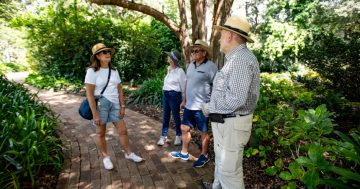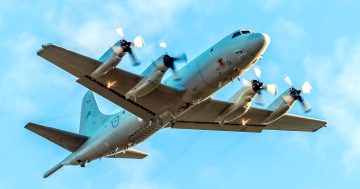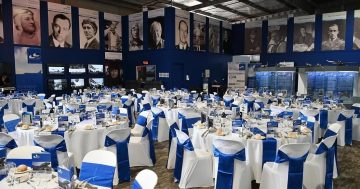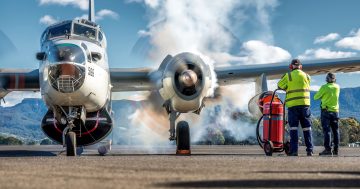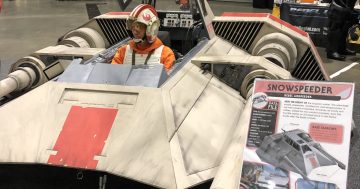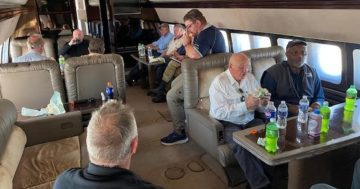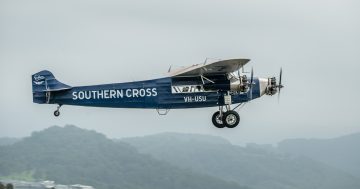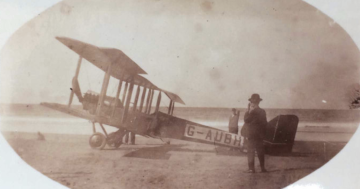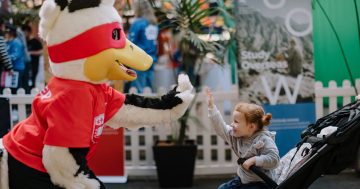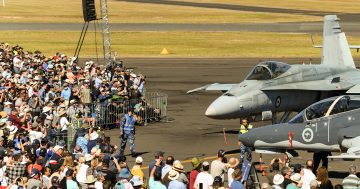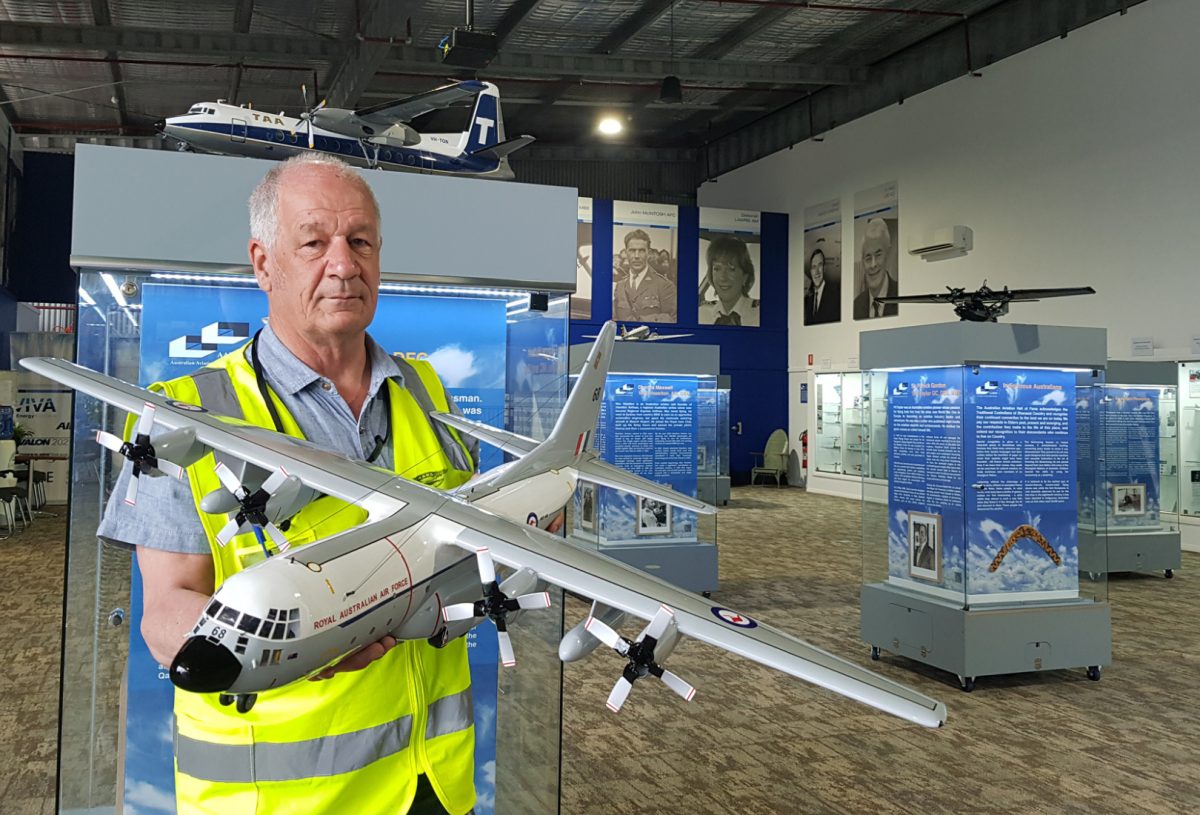
Model plane builder Steve Keddie with the C-130E Hercules model plane at HARS he finished just a month ago. Photo: Kellie O’Brien.
Little did Steve Keddie know at five years old that looking out over Bass Strait from the cockpit of an aeroplane would spark a lifelong love affair with aviation and later a passion for building model planes from scratch.
While embarrassed by the title “model plane master”, Steve’s incredibly detailed model replicas of real aircraft are now dotted through the Historical Aircraft Restoration Society (HARS) Aviation Museum at Albion Park.
It was his father who first passed on his love of aviation and model plane-making to Steve, the fourth of eight children.
“When I was five years old, I flew from Launceston to Melbourne with my father,” he said.
“He used to go over once every couple of years to visit (his aunties) and he would take one of his children with him.
“I still have a photo at home taken at my grandfather’s shack… with my dad standing next to me before we took off.”
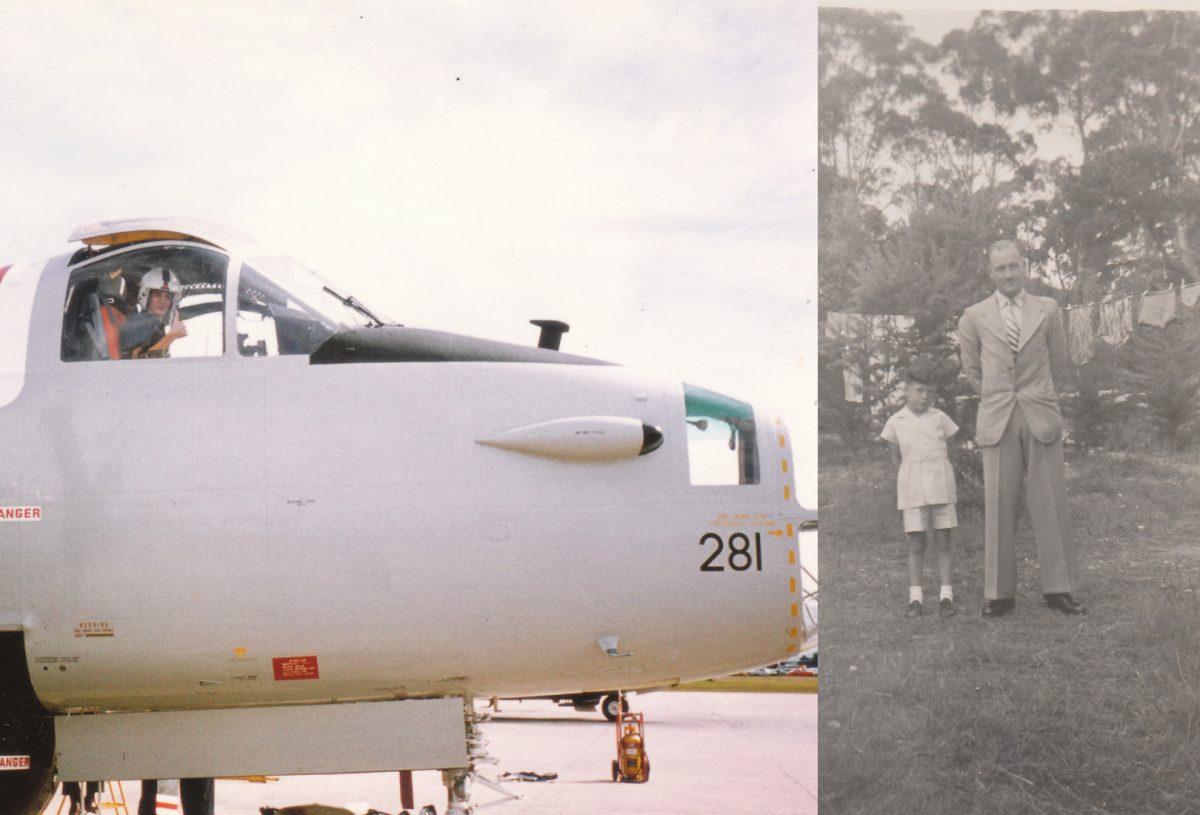
Left: Steve doing radio checks in the cockpit of a Lockheed Neptune at Richmond in around 1975. Right: Steve and his father. Photos: Supplied.
Steve said his first memories after taking off in the American airliner DC-4 was looking down on the ant-like people walking the streets below.
He said somewhere across Bass Strait, he was invited to meet the pilot.
“On the flight, my dad must have arranged that I went up to the cockpit and I even got to sit on the pilot’s knee,” he said.
“That was my first real exposure to aeroplanes.”
By his teens, he was reading Battler Britain comics and riding in the car with his aeroplane-loving father, who always chose to take the route into town that followed the flight path on the off-chance he might see a plane.
“I remember he had a little plastic model Tiger Moth on his office shelf and every time we moved, a little bit would get broken, but it was his pride and joy.”
During Steve’s teenage years, his father bought little balsa wood kits for the pair to build together.
“He would show me how to make it by making it mostly himself,” he laughed.
When his father passed away when Steve was just 16, he uncovered an old suitcase.
“I opened it up and here’s all these little half-built balsa wood model planes that had been carved out of solid balsa,” he said.
“I asked Mum about it and she said, ‘Oh, yes, in his younger days he actually ran a model aeroplane club’. He never told me that.”
His keen interest in aviation prompted his mother to respond to a newspaper advertisement for a radio technical apprentice, signing him up to join the Air Force and beginning a lifelong career in aviation.
“After I left there and was posted up to the Hawkesbury area, that’s when I started making plastic model aeroplanes,” he said.
“The joy was in making them, because once you’ve made them the problem was where do I put them?”

Steve said he has now made models of many of the planes housed at HARS. Photo: Kellie O’Brien.
Once married and with kids, the model aeroplanes mostly ceased until retirement, when he began searching for something to do with his hands and was steered back into making model aeroplanes, this time with balsa wood again.
He started off buying pre-made balsa wood kits from an American company, which were mainly World War II fighter aircraft with 40 cm wingspans.
“I’d made about half a dozen of those and there wasn’t any others that I was particularly keen on making,” he said.
However, there was one aeroplane he wanted to build, but the kit wasn’t to the right scale, so he took the plans to a print shop and asked to double the size.
“I had to make everything by hand, because with the previous kits everything was pre-cut and it was just a matter of glueing and assembling, so this I had to start from scratch,” he said.
“So I did that and finished it, and it wasn’t too bad.
“Because I was volunteering here at HARS, after I’d finished those I thought, ‘What am I going to make now? OK, I might start on making models of the aircraft that are here at HARS’.
“So that’s when I started scratch building.”
He said the process involved searching the internet for 3D drawings or photos, or taking photos of planes himself, working out the wingspan based on a 1:30 scale, then working out the dimensions of the other parts of the plane, before constructing them from balsa wood and PVC pipe.
Steve said each took about seven months to make and so far he’d made many of the planes housed at HARS, along with commissioned work and the odd aeroplane he’d always had an interest in.
The first plane he built from scratch was the Lockheed Neptune, which had special meaning due to his unit in Richmond in the 1970s doing major overhauls on Neptunes before they were taken on test flights.
“The best part was sitting up in the nose and doing a test flight over the Blue Mountains,” he said.
He recalls the mountains poking through the top of the clouds, as they dipped and dived through the valley and the occasional puff of cloud.
“It was the most magical flight I’ve ever done in a Neptune,” he said.
“I have a photo of me doing radio checks in the cockpit of a Lockheed Neptune at Richmond around 1975. That very same aircraft 281 is now one of three Neptunes on display at HARS.”
Steve’s model planes are on display across both floors of HARS, with plans to eventually house them together in a display cabinet.








